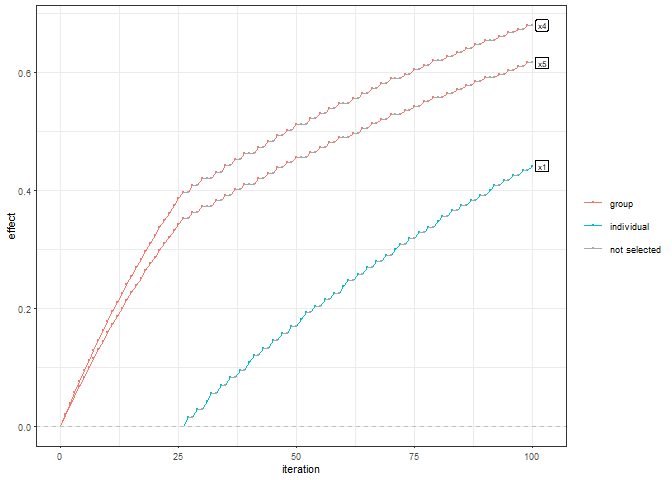Description
Sparse-Group Boosting.
Description
Sparse-group boosting to be used in conjunction with the 'mboost' for modeling grouped data. Applicable to all sparse-group lasso type problems where within-group and between-group sparsity is desired. Interprets and visualizes individual variables and groups.
README.md
R-package sgboost
Implements the sparse-group boosting in to be used conjunction with the R-package mboost. A formula object defining group base learners and individual base learners is used in the fitting process. Regularization is based on the degrees of freedom of individual baselearners $df(\lambda)$ and the ones of group baselearners $df(\lambda^{(g)})$, such that $df(\lambda) = \alpha$ and $df(\lambda^{(g)}) = 1- \alpha$.
Installation
You can install the development version of sgboost from GitHub with:
# install.packages("devtools")
devtools::install_github("FabianObster/sgboost")
Example
This is a basic example which shows you how to solve a common problem:
library(sgboost)
library(dplyr)
library(mboost)
For a data.frame df and a group structure group_df, this example fits a sparse-group boosting model and plots the coefficient path:
library(sgboost)
set.seed(1)
df <- data.frame(
x1 = rnorm(100), x2 = rnorm(100), x3 = rnorm(100),
x4 = rnorm(100), x5 = runif(100)
)
df <- df %>%
mutate_all(function(x) {
as.numeric(scale(x))
})
df$y <- df$x1 + df$x4 + df$x5
group_df <- data.frame(
group_name = c(1, 1, 1, 2, 2),
var_name = c("x1", "x2", "x3", "x4", "x5")
)
sgb_formula <- as.formula(create_formula(alpha = 0.3, group_df = group_df))
#> Warning in create_formula(alpha = 0.3, group_df = group_df): there is a group containing only one variable.
#> It will be treated as individual variable and as group
sgb_model <- mboost(formula = sgb_formula, data = df)
plot_path(sgb_model)
